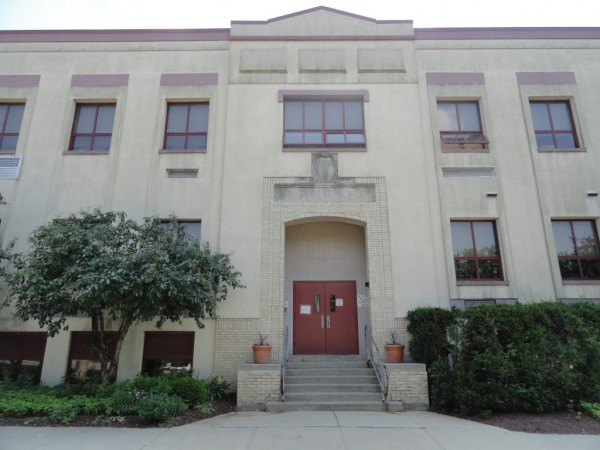As we approach the end of another fiscal year, here’s something to ponder over the summer in preparation for your future school years.
I’ve visited many faith-based schools over the past 16 years in five states, and every year I hear the same thing from a number of them:
“We’re really hoping that things start to turn around, or else we may not be open next year.”
When I ask what are the causes for their despair, the “big three” reasons are always cited: a difficult economy, shifting demographics, and current attitudes toward faith-based schools (not to mention dealing with the aftermath of a worldwide pandemic, which, interestingly, has been cause to increase enrollment in some faith-based schools who are now having a financial aid crisis, while it’s crushed enrollment at others).
Perhaps these attributes provide the dark side of the “big three” reasons why parents enroll their children in faith-based and private schools: faith identity, academic excellence and a caring and safe community.
These negative reasons seem to disappear when school administrators are speaking with parents of prospective children, though. Perhaps they’re excited to see that some parents still want to enroll their children in their school and forget about economic, demographic, and attitudinal concerns.
And that’s a good thing.
Why? Because we really can’t do anything about those things in the short-term. The problem is that we ignore those long-term problems, and focus on what we can do in the short-term to bring a quick solution to our pressing financial needs…like fundraisers. And more fundraisers. And then, even more fundraisers.
It’s easy to point to situations outside the schools as causes for their concerns. There are some valid reasons, however, which may be situated inside the schools.
The difficulty is no one wants to acknowledge those because the culprits are the attitudes which administrators, pastors, business managers, board members and members of the school community possess about the school. An upcoming article will go into detail regarding each of those elements, but for today’s article, here’s the emergent principle that results: we possess a poverty mentality, rather than an attitude of abundance.
An article published in The NonProfit Quarterly over a decade ago was titled “A Too-Sad Truth About the Non-profit Sector,” (http://www.nonprofitquarterly.org/management/20855-a-too-sad-truth-about-the-nonprofit-sector.html, 17 Aug 2012) and spoke of how non-profit organizations expect people to work for them for minimum wages, limited or no benefits, deal with outdated technology, and in sub-standard working conditions. A comment about the article from a LinkedIn member in Boston related her experience with a board member of a non-profit organization who suggested that an employee’s salary be cut to save money, and offered, “Where are they going to go?” as their rationale for the decision. That leader demonstrated outrageous disrespect for the employees of the organization who are struggling to keep 80 percent of their revenues going toward direct service. Today, that argument doesn’t hold water as demonstrated by “The Great Resignation.”
The reality, however, is that due to our new post-pandemic reality, some non-profits like hospitals are finding themselves in deep financial difficulty, cutting key positions that actually helped keep them open during the pandemic to serve those that truly needed services, while allowing 7-figure salaried employees to retain their positions.
How does this relate to tuition in faith-based schools? Administrators seem to work on budgets from year to year, rather than planning five years into the future. One administrator told me, “We don’t know where we’re going to be in five years,” to which I replied, “Oh, are you planning on building a new school somewhere?”
The look I received told me that she didn’t know if the school would be open in five years, so I asked, “If that’s not what you’re thinking, then how are you inspiring confidence in families that are considering enrolling their children in your school?”
My wife and I used to be volunteer Executive Directors of a pre-marriage preparation program. When we were selected to leadership, the current Treasurer told us, “Congratulations, but we have some bad news. If you don’t raise the cost of the program, we’ll be broke in 6 months.”
We convened a board meeting, and said we have to raise the cost of the weekend, and board members thought we were going to say $10 or $20. We said that we really didn’t want to see another increase (since the cost had gone up every couple of years), so we were recommending a significant increase effective immediately – more like $50. The increased cost would also cover the cost of printing new brochures without prices, because every year there was a $5 or $10 increase, new brochures had to be printed. It would also cover the purchase of a mobile phone and service plan so that the reservation number did not have to change every time there was a new reservation coordinator appointed.
We took the long-term approach.
Schools need to do the same.
Here are some of the reasons you need to raise your tuition to at least your cost of education, and, if I may be so bold, then add at least 5%.
1) Dispel disdain for non-profits that “make money.” “Non-profits that ‘make money'” – That’s pretty oxymoronic when you think about it. Today, health care legislation has been enacted because of the perception that hospitals are charging too much for their services. The largest hospital in Pittsburgh, the University of Pittsburgh Medical Center (UPMC), has its logo on the highest building in the city since that’s where its corporate offices are located. City residents shake their heads because if they have “all that money,” they should reduce their service costs so people can afford health care. You may also think that argument makes sense.
It doesn’t.
UPMC is not a “Pittsburgh” hospital – it is a world-wide entity, consisting of many hospitals, and many specialists. People come from all over the world to Pittsburgh for exemplary care, and especially to Children’s Hospital of Pittsburgh of UPMC. If vital care is necessary, families are glad there are great hospitals here with life-saving services in comfortable and inviting surroundings. What if some of the greatest specialists in the world were working in a facility that was overgrown with weeds, had a cracked front door window glass, and some of the patient room windows were falling out. Would you go there for treatment? Now, consider what your school building looks like. Will parents be exciting about bringing their children there everyday?
Here’s an educational example to illustrate my point. Several years ago, the Glen Montessori School in Pittsburgh purchased the former Perrysville Elementary School in the city’s North Hills. Here are before and after photos of the front entrance of the school, the “after” taken with a special lens to bring the whole building into the picture. The new paint job is simply stunning, rather than being your typical school building with a typical institutional facade.
2) “Low tuition” now has the perception of “Low quality of education.” Many administrators of faith-based schools think that because they work hard to keep tuition as low as possible, parents will appreciate it, and enroll their child.
Unfortunately, that’s an incorrect assumption.
Even in the greatest time of economic prosperity this country has ever seen, the 1990’s, enrollment in faith-based schools declined. Yet, even in today’s difficult economic times mentioned at the start of this article, and prior to our new pandemic reality, parents were still taking vacations to visit the land ruled by a cartoon mouse, and going on week-long cruises that many school teachers deserve but just can’t afford.
Even today, parents will pay for “experiences.”
Therefore, ask yourself, “What kind of experience am I offering the parents of the students in my school?”
Note that it’s not the experience of the children – you know they’re getting an awesome education, right? You need to consider the experience of the people who are footing the bill and paying tuition.
Further, I’ve seen faith-based schools that are in proximity to other faith-based schools, and the school with the lower tuition can’t believe that there are more children enrolled in the school with the higher tuition. That’s because a family will look at the lower tuition and say, “There must be something wrong with the school,” rather than look at the school first, and only then ask about the tuition. Indeed, there are those parents who will “shop” schools, and go to the one that offers them the most financial aid or has the lower tuition, but if a parent wants to argue incessantly about tuition before their child is enrolled, what do you think they’re going to do after their child is enrolled, and there’s an increase in tuition, or extra fees are imposed, or extra work is required to raise money for special projects?
3) Higher Tuition = Financial Aid Creation. As a former financial aid administrator, the one administrator comment that makes absolutely no sense to me is, “Oh, we don’t have financial aid. We keep our costs as low as possible, and whatever support we receive is spread across each student.” I reply with, “That’s called subsidized tuition.” Then the school administrator says, “Well, we don’t call it subsidy; we call it, ‘Investment.'”
That’s even worse.
“Investment” suggests that the investor will receive a monetary return on investment. Investment is also a “logic” term. Schools say “It makes sense to invest in our school.” And then the finance council receives a report that there is $18,000 in delinquent tuition…and it’s only November. No perspicacious investor will support a company, institution or organization that consistently loses money.
Simply put, if you’re still subsidizing the cost of education, you may be silently killing your school. In many markets, there are parents in your school community that can easily afford the cost of education plus a little more, while there are some that can’t even afford that subsidized tuition amount that you publish.
Here’s a first step – build $100,000 into your budget as a financial aid expense line. If you have 200 children in your school, it will raise your tuition by $500 per child. You may even consider making whatever “subsidy” you receive as financial aid, then publish tuition, which could be even higher than the cost of education. You may have to decide to do this YEARS BEFORE the year you’re planning on enacting that change to provide proper transitional strategies and give ample time to communicate with families about what you’re doing and why you’re doing it. Those families that are in the school can be awarded financial aid to ease the transition, which should take place incrementally over 4 or 5 years. By doing so, you’ve also taken a step in planning for the long-term growth of the school, which leads to…
4) An Inspired Long-Term Vision – Leaders are placed at the helm of a school because of a particular purpose. One leader I knew was given the choice – either grow the school, or close the school. Such a mentality is congruent with an article published in Fast Company Magazine over 10 years ago called, “Change or Die.” It spoke to research conducted which found that if someone was told they had only a short time to live if they did not change their habits, only 1 in 9 would be able to do so.
It makes sense, too.
How many of us keep our new year’s resolutions for any length of time? And how many of us, after being forced to change due to the pandemic, “couldn’t wait for this thing to be over with,” even though the virus will keep evolving and always be a threat?
Leaders need to have an inspired vision for the school. Where is it going to be in five years? Paint a word picture for prospective parents. It needs to be emotionally inspiring, and not just bullet points of “Things You’d Like To See.” Remember, Proverbs 29:18 states, “Where there is no vision, the people perish.”
5) Development Costs Money. Jim Collins, the author of “Good to Great,” penned words of wisdom when he wrote, “Good is the enemy of Great.” With that in mind, you need to envision a great school, not a good one.
I’ve been to National Catholic Education Association (NCEA), Association of Christian Schools International (ACSI), and Christian Schools International (CSI) conferences, and the sessions offered at each of them are excellent. Registration for conferences for faith-based schools are kept reasonably affordable, since many times, registration fees and transportation costs need to be borne by the participant. And today, with virtual conferences being offered, there’s really no reason that some kind of training can’t be attended at least once a month.
In truth, even great schools aren’t enough. Parents want…no, expect…excellence. That’s what they’re paying for. Consumers today pay four-figures for a phone (which they won’t pay for a desktop computer) that can do amazing and wonderful things. They may be paying four or five figures for your educational environment. You believe it’s worth it, but parents need to feel, not just know, that it’s worth it too.
Several years ago, I received literature about two conferences held in November that are targeted toward public school teachers and administrators. One was in Nashville, TN, sponsored by the International Center for Leadership in Education. I attended this conference over a decade ago, and it’s inspiring, energizing and very forward thinking. The registration cost was $545 per person. The tools offered by the organization (texts for $295, and surveys for $600) are also pricier than comparable offering that are prepared for faith-based schools. The other conference was the Learning and the Brain Conference. Registration cost: $569 per person. Additional pre-conference workshops were also offered at $189 per person.
This is not a criticism. It’s pointing out the fact that these organizations know the value of their services, and make no bones about charging those fees.
One of my favorite passages from Scripture is “I set before you life and death, the blessing and the curse; now, choose life so that you and your descendants may live” (Deuteronomy, 30:19). Remember, you can only “cut” so far. Cut too deeply, and exsanguination can occur.
© Michael V. Ziemski, SchoolAdvancement, 2012-2024



